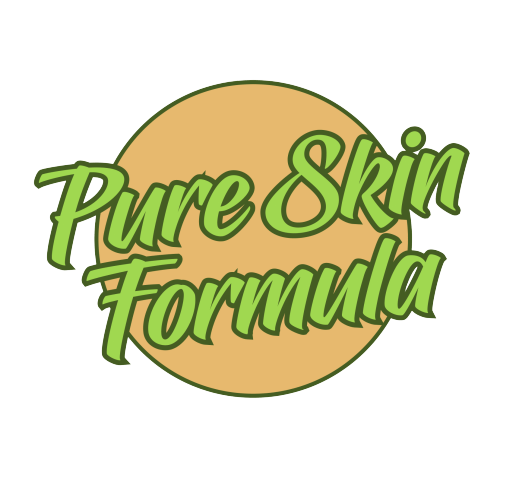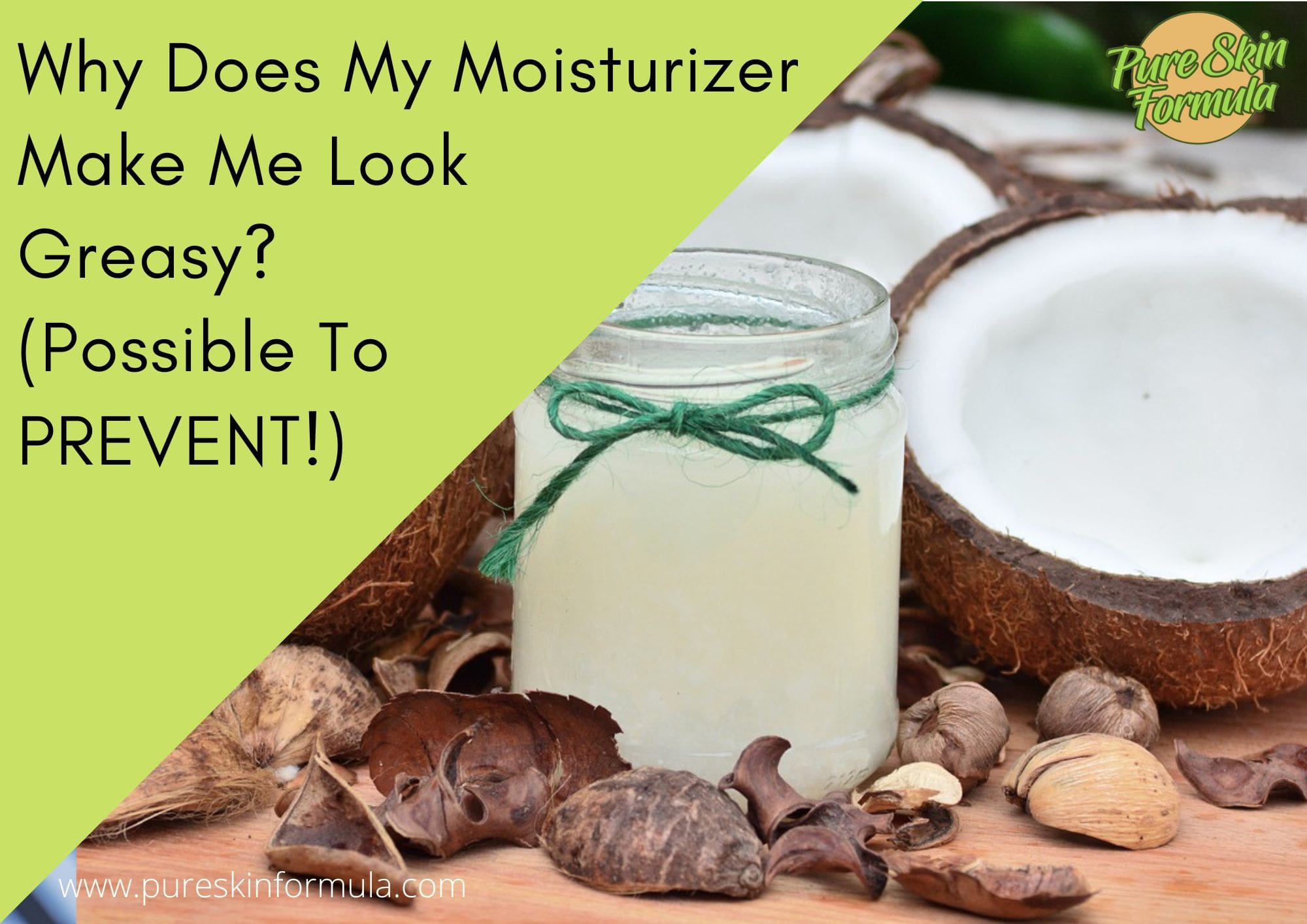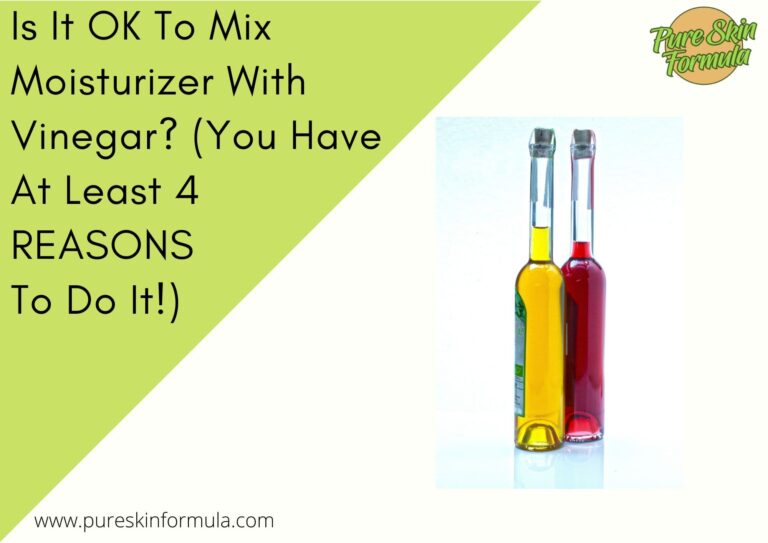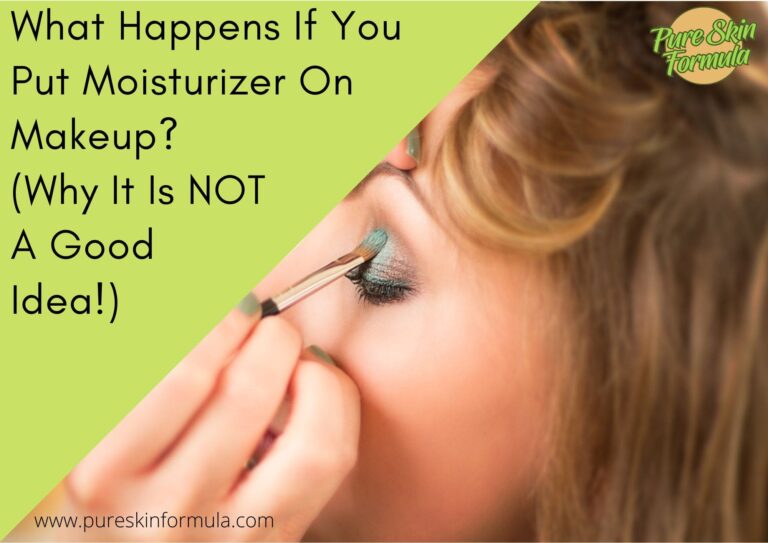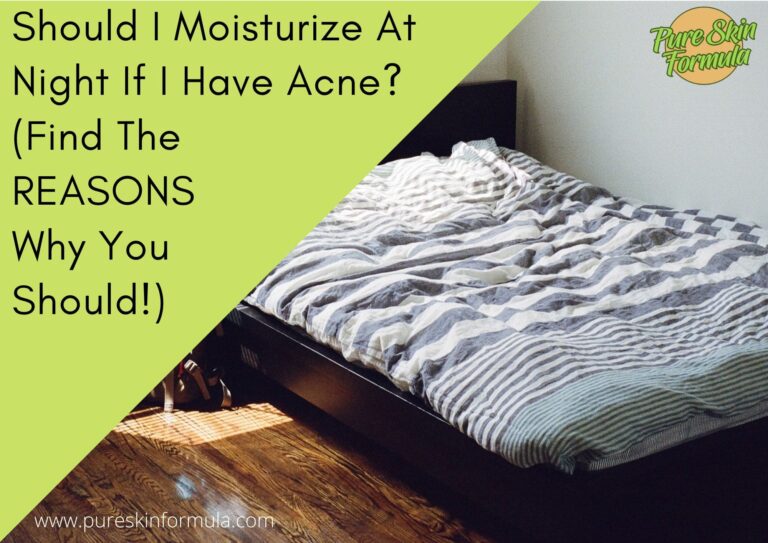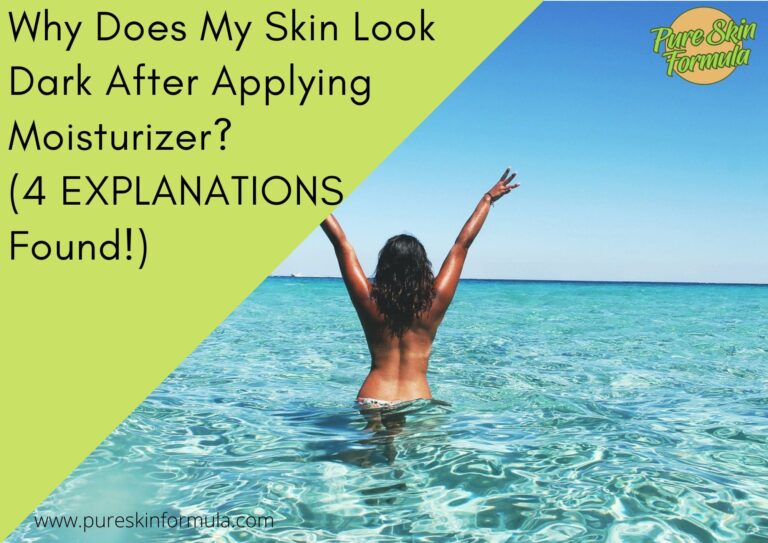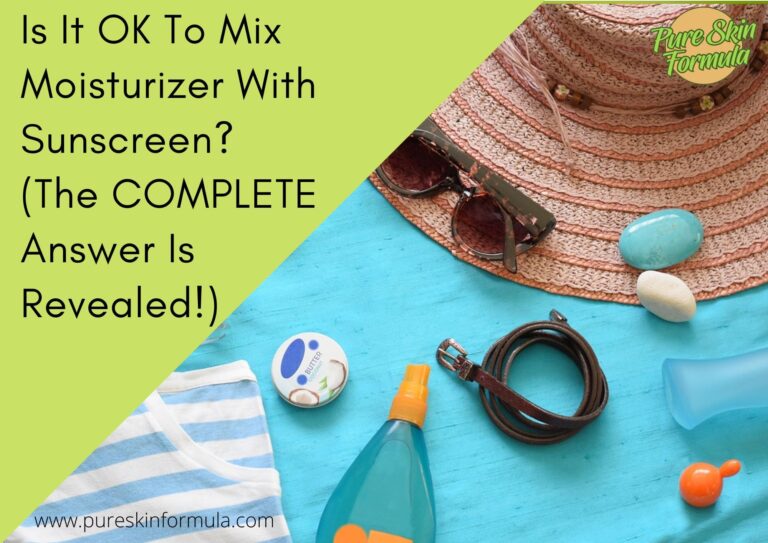You are not alone. Many people report greasy skin after using moisturizer. This can be avoided.
There are a couple of possible reasons why this might happen. Most of them are skin type-related and skin routine related.
I will cover them here while giving you suggestions on how to improve the look of your skin and remove the greasy effect.
Why does my moisturizer make me look greasy?
- The product used doesn’t match your skin type;
- You have clogged pores;
- You overwash your skin;
- You wash your skin with comedogenic oils;
- You use the incorrect quantity of the product;
- You don’t exfoliate your skin;
- You are exposed to the sun without protection;
- You apply the moisturizer the wrong way.
Before we analyse the phenomenon in detail, let’s see how nature works and how our skin gets oily, as this will help us better understand the process.
What makes our skin greasy?
There are two types of glands in the human body: eccrine sweat glands and sebaceous glands.
The eccrine glands are scattered all over the body, with the highest density on the palms and soles and the lowest density on the thighs.
Our body responds to warm and humid weather changes by perspiration originating from these glands. They react to changes in temperature and balance our temperature.

Fresh sweat is sterile and odorless, consisting of 90% water, salts and waste matter, which our body releases as it evaporates.
The problem comes when sweat comes to the skin’s surface and comes into contact with all sorts of microorganisms and bacteria. And that is when the unpleasant smell appears!
On the other hand, the sebaceous glands are most concentrated on the scalp and face, particularly the acne-prone areas. They are responsible for sebaceous secretion – sebum.
Even if we are not fans of “shining” the face, we must admit that it is vital for our skin, as it lubricates the face’s epidermis and protects it from cracking, drying, etc.
And as we well know – excessive secretion of sebum leads to oily hair and face, while lack of enough sebum leads to dry skin and hair.
And lucky are the people who enjoy balanced sebum production and normal skin type!
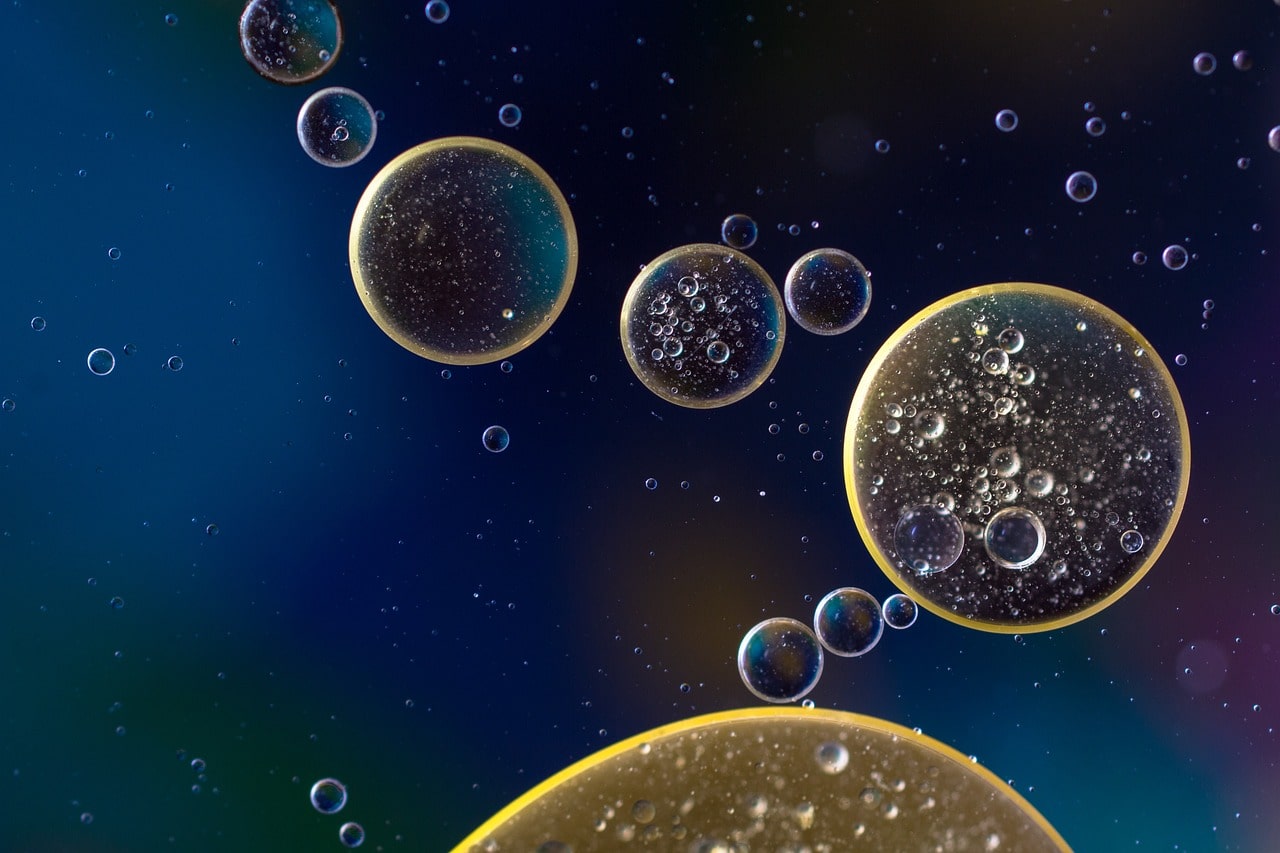
As a result of sweating and the perfect self-cooling mechanism, our skin can look oily.
Sweat and sebum don’t mix well when they meet on the skin’s surface, and so little droplets appear, giving the skin a shiny appearance and making it look greasier than it is.
Visually, we can explain things like this: if we pour oily droplets into a bowl of water, they will remain on the surface and look like the whole container is full of grease.
This is also how we deal with excess sebum: we don’t look for the solution for these droplets but try to dry the whole bowl. And this leads to skin deterioration and the appearance of excessive oiliness.
After using moisturiser, let’s go through the most probable reasons for greasy skin.
The product used doesn’t match your skin type
If you have oily skin, thick, heavy cream can lead to a greasy film on the skin.
Here are some possible solutions:
You may try gels and serums. For example, hyaluronic acid and niacinamide-based products.
Opt for light cleansers, hydrating water-based moisturizers, a mattifying toner and an active anti-blemish product.
For problem oily skin prone to comedones and acne, use a treatment product every day without exception – it’s the only way to beat stubborn imperfections.
Use products specifically formulated for oily skin and non-comedogenic makeup.
And don’t forget the sunscreen, even in winter.
You have clogged pores
Clogged pores are caused by increased sebum (secreted by the sebaceous glands in the skin), dead skin cells and dirt – things from the environment and our makeup.
In this case, the applied moisturizer cannot absorb well and remains on the skin’s surface, creating a greasy film.
Products with retinol and salicylic acid are suitable for exfoliating the skin and cleansing and maintaining the pores.
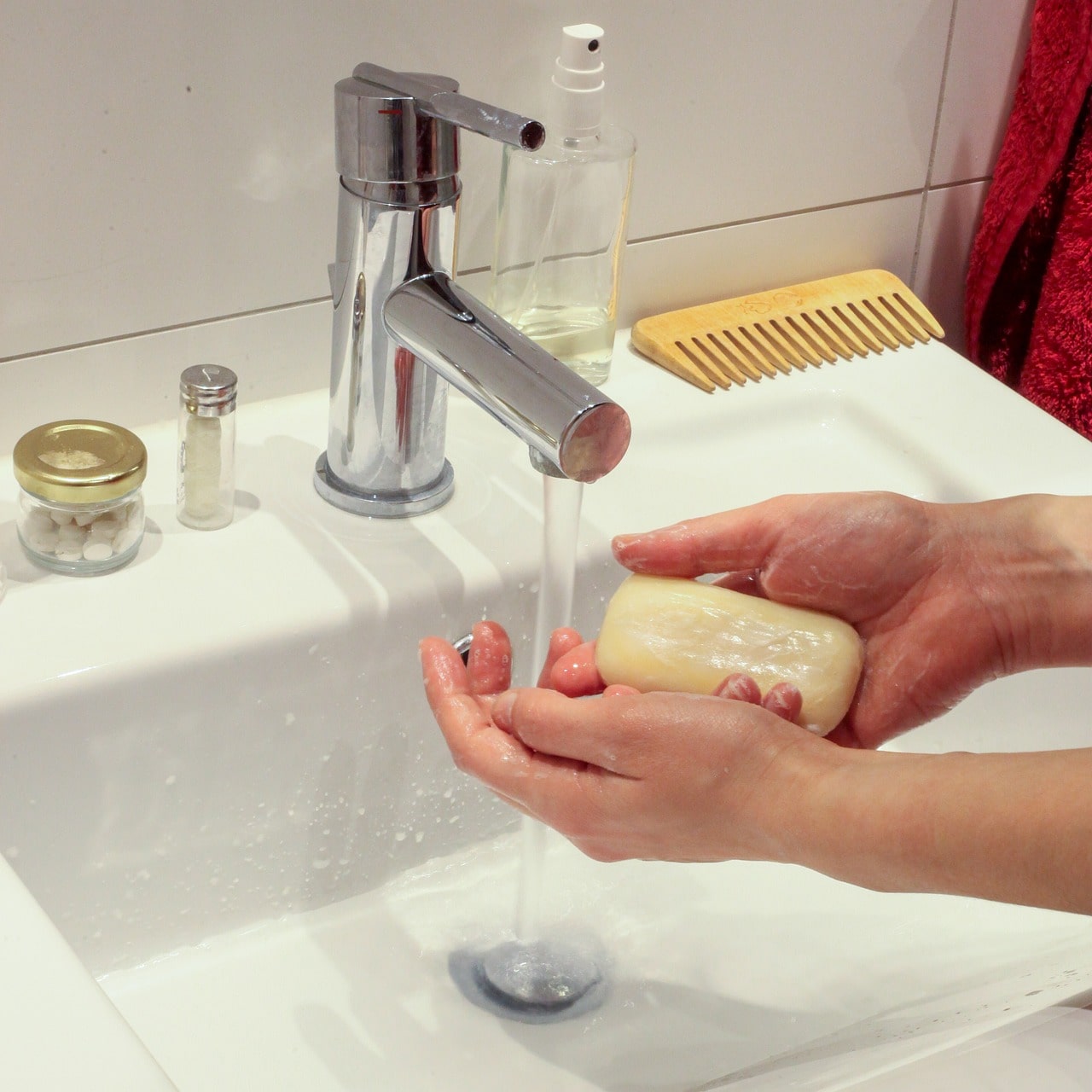
You overwash your skin
You should not over-wash. The first and primary step to caring for oily facial skin is cleaning it properly.
And that’s far from constantly using makeup wipes or washing your face every chance you get.
The more aggressively you approach the removal of excess sebum, the more the sebaceous glands of the skin will activate and try to restore the deficiencies.
The face should be cleansed gently; twice a day is quite enough (morning and evening), with products designed for oily skin types, like micellar water or a cleansing product (gel or foam) rinsed with water.
You can also experiment with cleansing your face with oil.
Different oils – jojoba, hazelnut, coconut, apricot kernel, etc. can substitute store-bought cleaners.
But are they meant for everyone? Let’s see the next point.
You clean your skin with comedogenic oils
Oil cleaning is not a one-size-fits-all for everyone. If you have acne or sensitive skin, it’s wise to steer clear of coconut oil or olive oil as they have a high comedone index and can cause breakouts.

In such cases, it is best to use a soothing oil such as apricot kernel oil or sunflower oil, as they treat redness, inflammation and dryness while cleansing our skin.
Additionally, oil cleansing in some can lead to comedogenic cystic acne, almost resembling rashes. If this happens, then oil cleansing is not for you.
You use the incorrect quantity of the product
Another issue is that you use too much moisturizer, thus having a greasy feeling on the skin. Your skin needs as much cream as it can absorb.
If traces of the product remain on its surface, it leaves it without vital oxygen, leading to premature wrinkles.
You apply the moisturizer the wrong way
You should follow the correct sequence when having two or more skin care products.
Facial serums are small molecules, so apply them before the moisturizer. They are very concentrated, so a tiny amount is enough.
Then apply the moisturizer.
Patting in the cream on the skin is a good technique, giving enough time and heat for sound absorption.
Every morning and evening, do a facial massage (only takes a minute) – the movements should be from the centre to the periphery.
This means starting by applying the moisturizer with the fingers of both hands from the middle of the forehead to the temples, from the nose to the ears, and from the middle of the chin to the cheeks.
You don’t exfoliate your skin
Using an exfoliating product once a week is also recommended.
In addition to removing dead skin cells, exfoliating hydrates the skin profoundly and improves blood circulation to the face, stimulating collagen production and skin elasticity.
You are exposed to the sun without protection
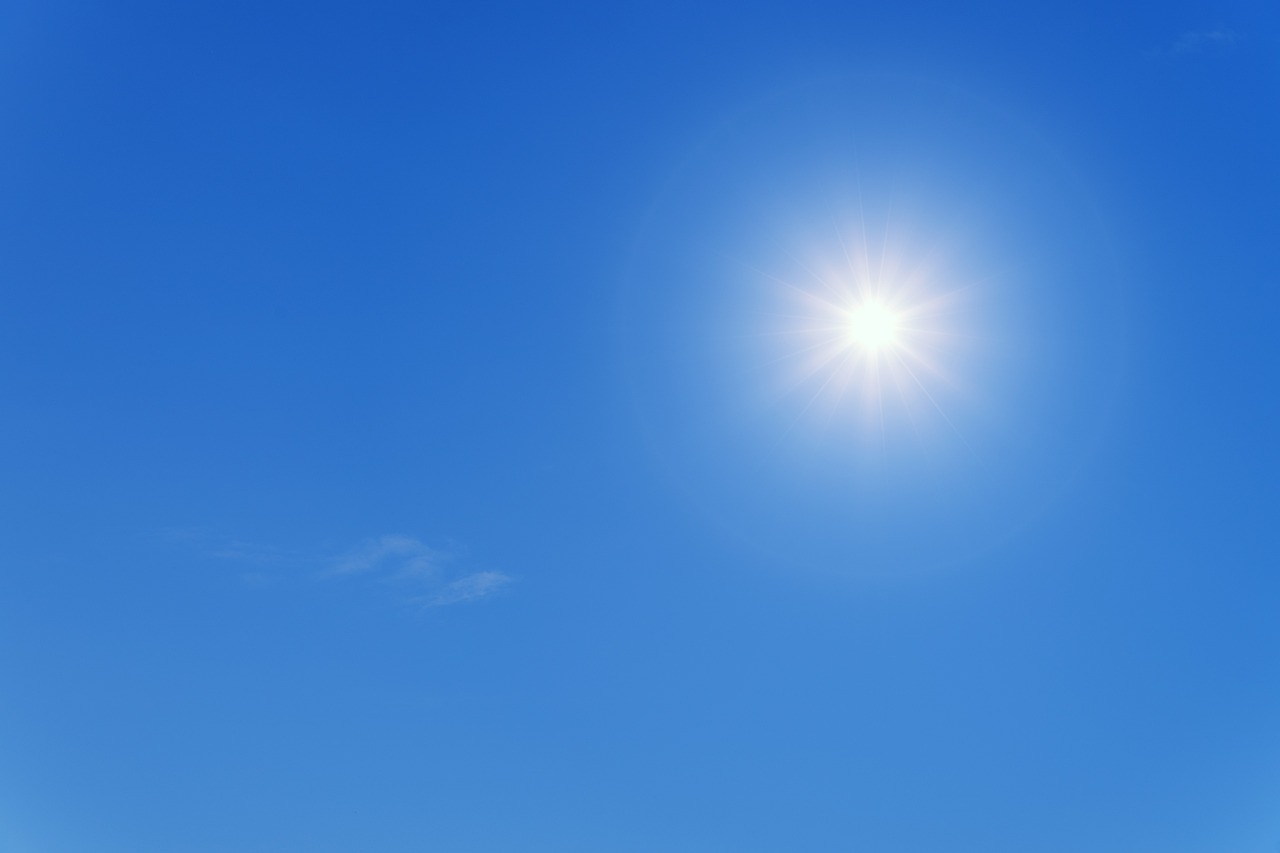
Persistent and prolonged sunbathing dries out the skin and hides imperfections under a chocolate tan.
The sun’s rays cause the stratum corneum to thicken and stimulate the sebaceous follicle’s retention of cells and sebum, thus the greasy skin after using moisturizer.
Comedones and pimples inevitably increase when the tan disappears.
The solution is to use a sunscreen with at least SPF 30, although, for hypersensitive skin prone to pigmentation, you could try the highest factor, SPF 50.
And opt for non-comedogenic lightweight and fast-absorbing textures designed for oily or acne-prone skin.
The bottom line
It is possible to prevent skin from looking greasy after using moisturizer. In some cases, you should follow some rules or should be persistent in other.
I have covered eight possible reasons why this could happen and suggested some advice on preventing a greasy look.
It is up to you to explore your case and take action.
Thank you for reading!
Valeria
